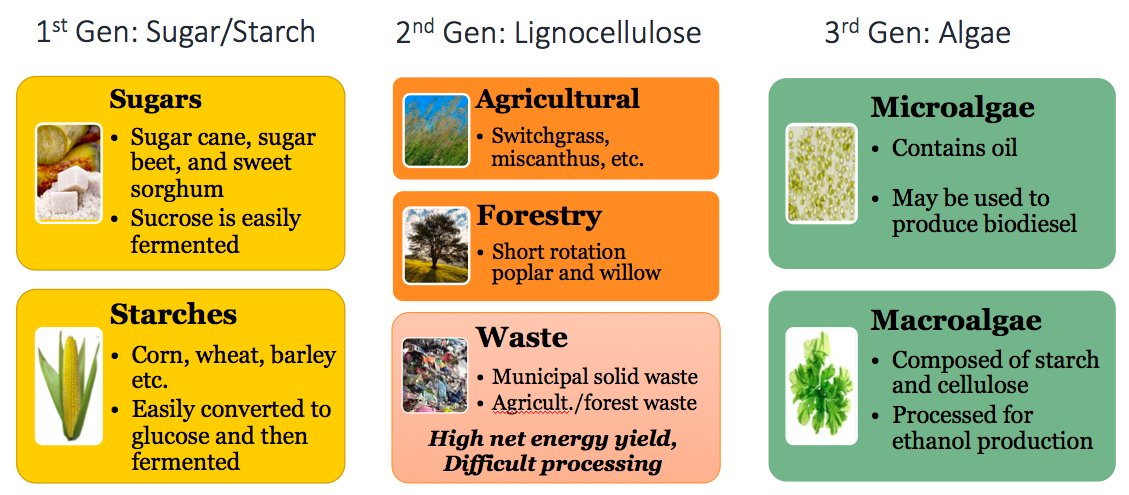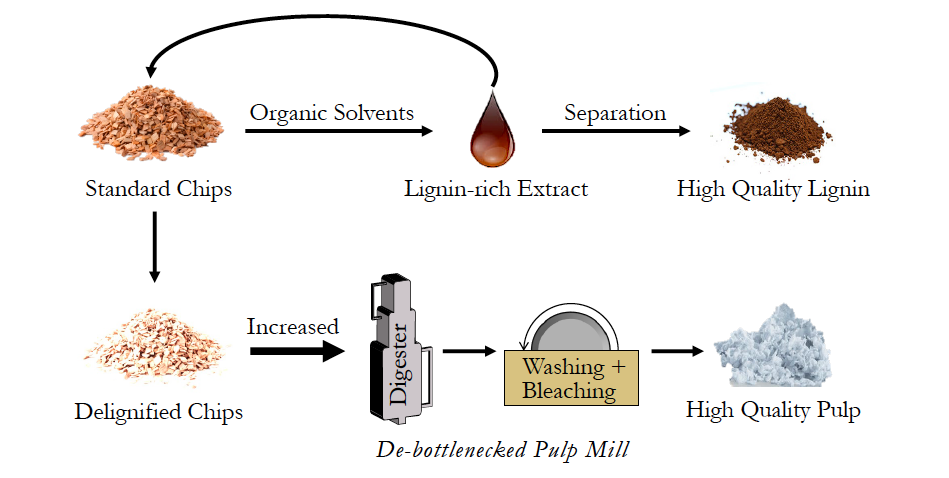2. Chemicals from Renewables
While only some plants efficiently produce and store starches and simple sugars, all plants contain large amounts of carbon-rich polymers that make up their cell walls. These polymers are exploited in second-generation biofuels and renewable chemicals that are derived from non-food lignocellulosic biomass.

Our lab focuses on fractionating cellulose and lignin and upgrading them to fuels and chemicals. We work in conjunction with the Renewable Bioproducts Institute, The Lignin Group, and many other organizations on campus.
Lignin Value Prior to Pulping

Organic solvents can facilitate the production of chemicals, fuels, nanocellulose, and pulp from lignocellulosic biomass. Primarily, the focus has been on how specific organic solvents isolate and alter the native cellulose, and the largest body of work focuses on the production of cellulosic ethanol. However, paper and packaging are the two biggest consumers of cellulose and lignin. This industry uses a billion tons of wood each year, and with these high throughputs, small percentage improvements can have large economic impact. We research a process that employs an organic solvent to remove lignin from biomass while maintaining cellulosic integrity for pulp production. This alternative pulping system, called lignin value prior to pulping (LVPP), provides an un-sulfonated lignin stream and improves the operating economics of a pulp mill. We use techno-economic analysis to define minimum lignin selling prices (MLSP).